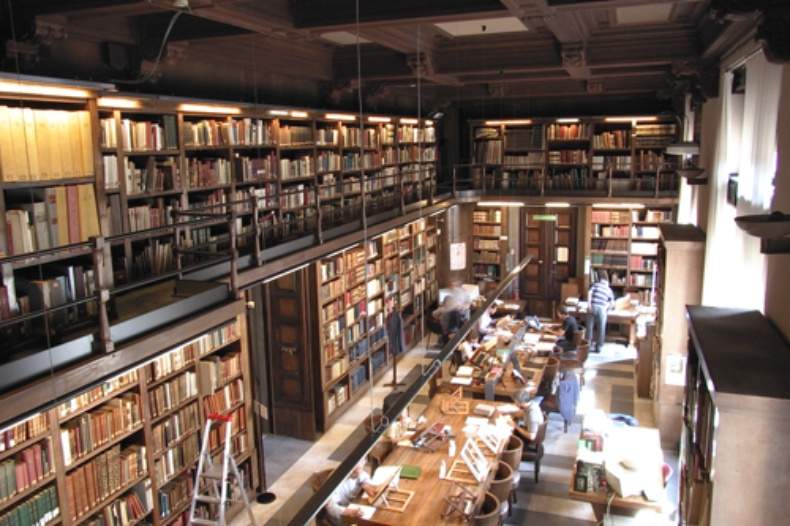The Directorate General for Education, Research and Cultural Institutes of the Ministry of Cultural Heritage and Tourism has published the guidelines for the protection and preservation of cultural heritage, prepared by theCentral Institute for the Pathology of Archives and Books (ICPAL) and theOpificio delle Pietre Dure (OPD): in particular, the two institutes have published two documents where they prescribe measures for the sanitization of archives and libraries (ICPAL) and museums and laboratories where works of art are present (OPD).
These are guidelines that, the OPD document says, “do not claim to deal exhaustively with the subject matter”: thus, they only talk about sanitizing environments and not about the safety of employees or people. Starting from the lines for museums, the OPD acknowledges, meanwhile, that the issue is very complex because scientific data on SARS-CoV-2 virus and Covid-19 disease are not complete and exhaustive, and that regarding the survival of the pathogen on surfaces, reference was made to the Ministry of Health circular no. 5443 of 22/02/2020, where it is pointed out that the lifespan of the virus ranges from 1 day for latex gloves to 9 days of plastic surfaces (metals 5, wood 4, paper 5, glass 4/5, ceramics 5, disposable gowns 2). Consequently, OPD points out, if an environment has been closed to the public for more than nine days, it is not necessary to sanitize it upon opening, since the quarantine period necessary for hazard abatement has already passed, and a thorough cleaning with disinfectant material will suffice (think, for example, of museums, which have been closed for several weeks now). However, the OPD also points out that “in the most recent scientific literature available online, but since we have no expertise in this area we express no opinion on this, such temporal persistence of the virus is drastically abated.” The OPD thus refers to the Ministry of Health’s circular.
Regarding artworks, the OPD makes it known that “it should be stated with the utmost clarity that no one should apply anything on them except by a restorer of cultural property qualified according to current laws.” Regarding cultural property that is potentially susceptible to contagion because it has been recently moved (lent works or books), the OPD prescribes that “a period of isolation in a segregated environment for the duration of the days necessary for quarantine of that category of materials, thus generally between 5 and 9 days, will be sufficient.” A segregation (this is the term used in the document) that will certainly eliminate the risk. The OPD also considers any contribution made by increased environmental temperature to be insignificant, because the figure is uncertain and in any case above acceptable thresholds for the preservation of cultural property. The document then lists technical materials to be used for cleaning objects. The OPD concludes with some general guidelines (separation of entry and exit of the public, measurement of body temperature from a distance, avoidance of assemblages in passage and rest rooms such as bathrooms, corridors, and break rooms, use of personal protective equipment such as masks and disposable gloves) and reminding that the greatest source of danger is definitely contact between people and not between people and inanimate objects.
The ICPAL document, recalling that not all common disinfectants are adequate for cleaning in environments where cultural goods are exposed, preserved and stored, and that the procedures for any sanitization cannot “be considered unambiguous and applicable in the same way to any environment, prescribes ”careful cleaning, without resorting to the use of chlorine-based products, which are too oxidizing, but preferring the use of ethyl alcohol.“ As for ”modern" environments intended for office work and documents of daily use (e.g., invoices or estimates), there is no problem in the use of materials such as hydrogen peroxide with finely atomized silver salts, subject to the elementary safety rules on the ignition of electrical systems, which should be properly disconnected before proceeding with cleaning operations. Historical environments and valuable surfaces, on the other hand, will be treated with special materials (the document lists prescriptions).
Regarding archival and library collections, no disinfection will be necessary if these assets have been isolated in the two weeks prior to reopening to the public. On the contrary, books and documents will have to be isolated at least 10 days, without disinfecting them (they may in fact be damaged). The isolation of lent books and documents will require a specially designated room identified within each institution, possibly with windows that can be opened regularly to allow air exchange. With regard to access procedures for consultation, users will need to be provided with personal protective equipment (gloves and mask), and the institutes, at the entrance to the premises, will have to provide dispensers of disinfectant gel. The material will be picked up by a library or archives employee, also equipped with personal protective equipment, who should give it for consultation in a room possibly equipped with modern furniture that can be easily cleaned or disinfected. Again, the material, once the consultation is over, should be left in preventive isolation for at least ten days, possibly inside containment bags. The consulted material will therefore not be accessible by anyone during the next ten days. The same requirements apply to photographic material.
Pictured: the manuscript room of the National Central Library in Florence.
 |
| Quarantine also for books and works. Here are MiBACT's measures to sanitize museums, libraries, archives |
Warning: the translation into English of the original Italian article was created using automatic tools. We undertake to review all articles, but we do not guarantee the total absence of inaccuracies in the translation due to the program. You can find the original by clicking on the ITA button. If you find any mistake,please contact us.